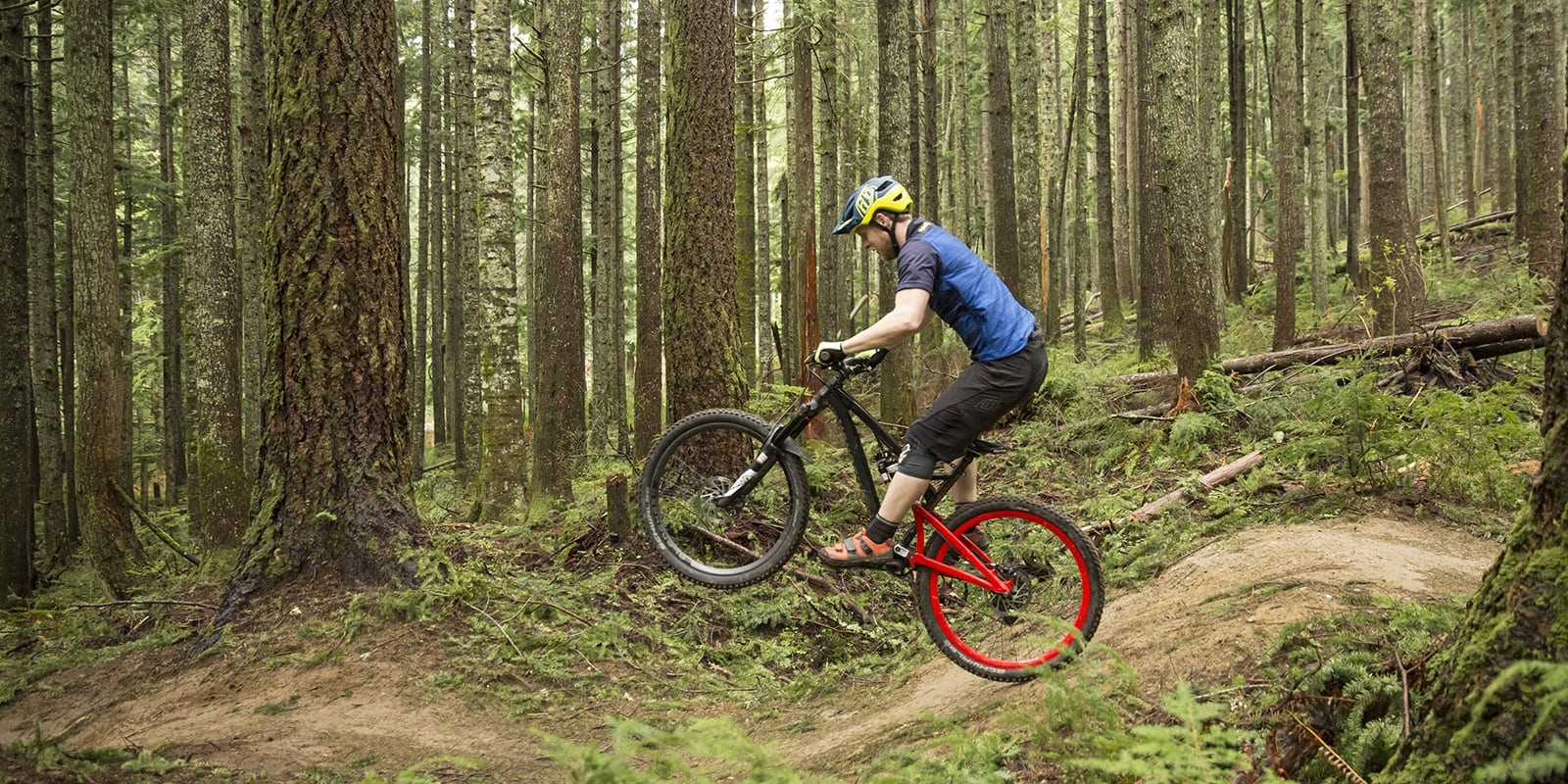A manual, like a wheelie, is a technique for keeping the front wheel off the ground while you roll on the rear wheel. It differs from a wheelie in that you don't pedal.
Manuals aren't just a fun way to show off—they can also increase your speed and efficiency on the trail. They're smoother and quicker than a standard wheel lift for getting over bumps like water bars or little roots, and they help you carry speed through pumpy sections of trail.
Video: Mountain Biking: How to Manual
Manual Technique
There are two parts to the manual: getting the front wheel in the air and finding the balance to keep it there. The key to both parts is using your body weight.
Getting the Front Wheel Up
To get the front wheel off the ground, you need to preload and punch.
- Preload: The preload part is pretty straightforward. You push your weight down into the bike to preload the suspension. This'll give you some rebounding energy that'll help get the wheel up.
- Punch: As soon as you're low over the seat, it's time for the punch. As quick as you can, push your feet and arms forward and throw your weight back. You want to keep your arms locked straight so that it's your weight that brings that wheel up rather than pulling the wheel up with your arms.
Keep even pressure on both sides of the handlebar and on both pedals to keep the bike in balance. If you try to lift the bars with just your arms, you'll drop your chest forward, which forces the wheel down.
Balancing
Now that the wheel's up, you can work on holding it there by balancing.
- It's all in the hips: The key to balancing a manual is in your hips. Keep your hips low and over the back wheel, and move them forward and back to stay in balance.
- Keep a finger on the brakes: Keep your finger on the rear brake—if you feel like you're going to tip backwards, all it takes is one tap on the brake and your front wheel will drop down.
How to Practice a Manual
Start small with a line on the ground and try to time your manual so you get your wheel up over the line. Then try it over a small stick. Once you have the timing nailed, you can take it to the trail.

